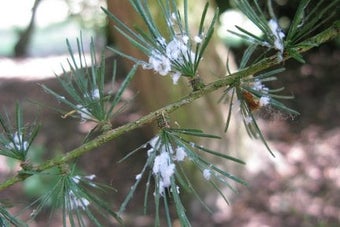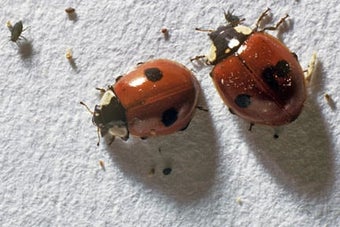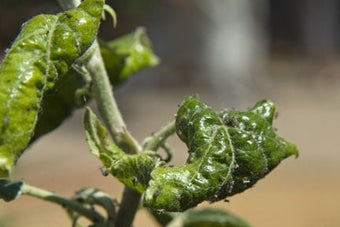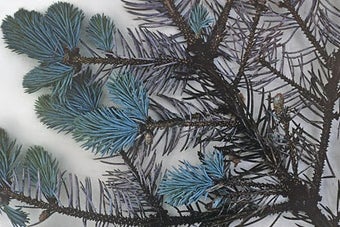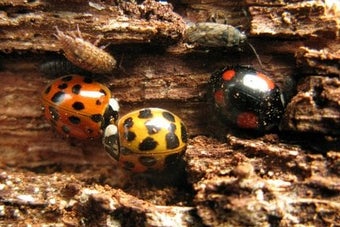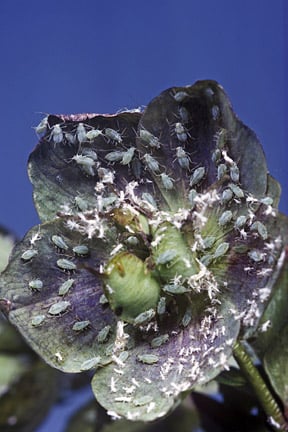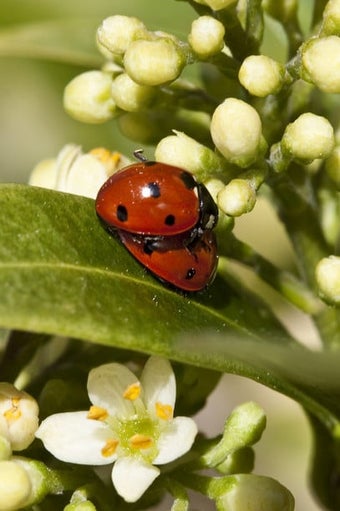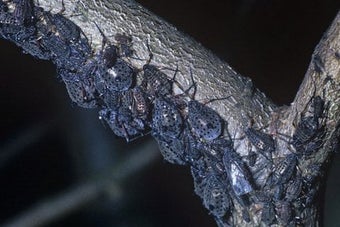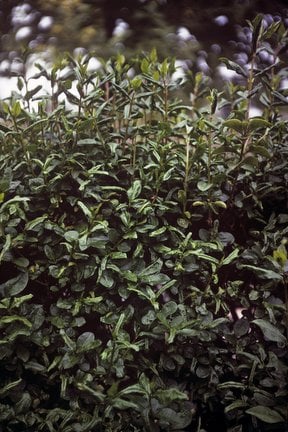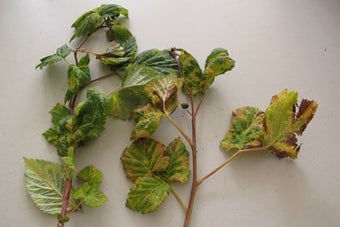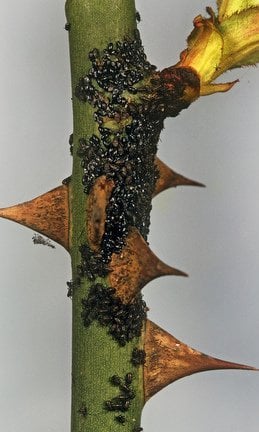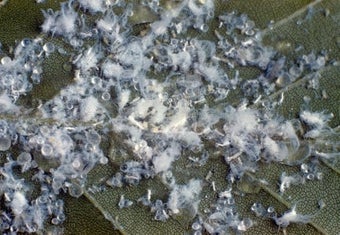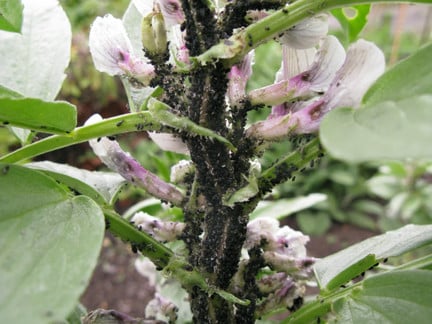
Quick facts
Common name - Black bean aphid
Scientific name - Aphis fabae species group
Plants affected - A very wide range including broad, French and runner beans, nasturtium, dahlia, philadelphus, viburnum and euonymus
Main cause - A black sap-sucking insect
Timing - April-August
What is black bean aphid?
There are several species of black aphid that can be found on garden plants, a very common blackfly is the group of species known as the black bean aphid, Aphis fabae agg. These -sucking insects can form dense colonies on the soft young growth of many plants.
There are many other black aphid species; for example cherry trees are often host to a different species known as cherry blackfly. Aphids are sap-sucking true bugs. They range in size from 1 to 7 mm (¼ in or less) long. Some aphids are known as greenfly or blackfly, but there are species that are yellow, pink, white or mottled. There are more than 500 aphid species in Britain. Some feed on only one or two plant species, but others can be found on a wide range of plant hosts. Many have lifecycles that involve more than one host plant. Almost any plant can be a host to aphids, including ornamentals, vegetables, fruits, greenhouse plants and houseplants. More information on aphids.
Symptoms
Black bean aphids are up to 2 mm long and are mainly black but may have some white flecks on the upper surface of their bodies. Dense aggregations can rapidly develop on soft shoot tips, flower stems and on the underside of the younger leaves. The aphids are often attended by ants, which collect the sugary honeydew that aphids excrete, the ants will also remove aphid predators such as ladybird larvae. Whitish cast skins of aphids often accumulate on host plants.
Large populations can weaken host plants and can result in stunted growth. On broad beans, pod formation can be poor if the plants become heavily affected. Flower formation on ornamental plants, such as dahlia, nasturtium and poppies, can be damaged when blackfly are feeding on the developing flowers. The winter-spring host plants, such as Philadelphus, Viburnum and common spindle (Euonymus europaeus), often develop curled foliage in response to the aphids' feeding, this damage is minor and the plants usually recover.
Management
What should I do? Here are our top tips to your most common questions on managing blackfly.
Should you remove blackfly? Tolerate these aphids where possible. It is usual to have some in a healthy, balanced garden. They are a vital food source for a wide range of wildlife in the garden.
Do aphids kill bean plants? Very rarely. Plants may not grow as well, pod formation may be poorer, but you should still get some pods. The beans themselves will be undamaged and perfectly edible inside.
Do I have to control aphids? You don’t have to kill or control them. They are part of the of gardens and a vital food source for other wildlife in your garden. If you do decide to control aphids, here are some of the steps you can take to manage aphids
- Check plants frequently so you can act before the damage has developed
- Use finger and thumb to squash aphid colonies
- heavily affected shoot tips
- Encourage the natural enemies of aphids in your garden, such as ladybirds, ground beetles, hoverflies, parasitoid wasps and earwigs. In spring, aphid populations increase before the natural enemies are active in sufficient numbers – so if you wait a while, they’ll often give the control
- Some natural enemies of aphids can be purchased as biological control for use in greenhouses, including hoverfly larvae, lacewing larvae and several parasitoid wasps. More information about these can be found on the ‘aphid predators’ page
Should I use to control aphids? No - The RHS recommends that you don't use pesticides. This is because most pesticides (including organic types) reduce biodiversity, including natural enemies, impact soil health and have wider adverse environmental effects.
Biology
The group of species known as Black bean aphid Aphis fabae agg. overwinter as eggs on shrubs such as common spindle (Euonymus europaeus), Viburnum and Philadelphus. Egg hatch occurs in spring as the winter host plant is coming into new leaf. Several generations of wingless aphids, which are all female and produce live young rather than eggs, develop on the spring foliage. By May, the foliage on the winter host plants has become older and tougher, which along with increasing day length induces a change in the aphids. A generation of female winged aphids develops that fly away in search of suitable summer host plants, such as beans, nasturtium, poppies and dahlia. At that time of year male aphids are not required for reproduction, so a single winged aphid arriving on a broad bean can quickly establish a new colony. Blackfly colonies on the winter-spring host plants die out during May-June.
At the end of summer, another winged generation of aphids is produced that migrates back to the winter host plants. At that time there are males and females that will mate before the females deposit eggs around and in crevices on the stems.
